You are here
The Ute: Relations with Anglo-American Settlers in the 1800's Resource Set
The Ute - Relations with Anglo-American Settlers in the 1800's - Resource Set
The resource set includes additional sources to accompany the Primary Source Set and Lesson Ideas to help extend lessons and further student understanding. Primary Source Analysis Worksheets are available on the Elementary Primary Source Sets main page.
Group portrait of North American Indian (Ute) men and women (Photograph)
Group portrait of North American Indian (Ute) men and women who include Chief Ouray and his wife, Chipeta. Chief Ouray wears a beaded buckskin shirt, leggings, and a breechclout, his hair is braided. Chipeta wears a fringed buckskin dress, a beaded necklace and wears her hair loose, she has on earrings. The white man with the dark beard and a cane is Otto Mears. An unidentified Ute man has fur wrapped braids, he wears beaded leggings, fringed moccasins; he has a blanket across his lap.
The Meeker Massacre (Sketch)
A reproduction of a sketch of soldiers surveying the damages after the fire and battle with the Ute Indians that broke out on September 29, 1879 at the White River Indian Agency. Nathan Meeker and his eight male employees were killed during the fighting, and his wife and daughter were taken hostage.
The citizens of Rio Blanco County, Colorado erected these memorial markers in 1927 at the site of the White River Indian Agency where Nathan Meeker and eight of his employees were killed. A native granite stone with a bronze plaque was placed in memory of the men lost on September 29, 1879.
Nathan Meeker (Photograph)
Nathan Meeker was determined to change the traditional horse culture of the Ute, and his patronizing treatment of the Ute helped set the stage for the Battle of Milk Creek and the Meeker Massacre in 1879. Though killed in the conflict, the military buildings constructed to house troops along the White River soon became the town of Meeker.
A Ute Family in Meeker, CO, 1902 (Photograph)
Reservations that were once owned by the whole tribe were broken up into small pieces that were owned by individual families.
Brunot Agreement Map (Map)
The Southern Ute Tribe was granted hunting rights in a large part of the state under the Brunot Agreement of 1874. In 2016, the Southern Ute Tribe worked with the Colorado Division of Wildlife to re-establish hunting rights within the Brunot Agreement territory.


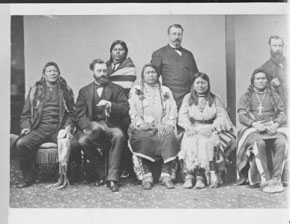
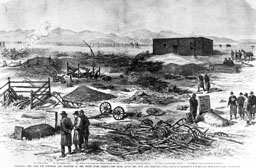
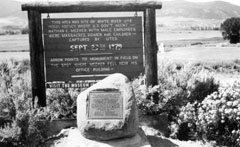
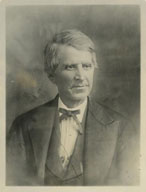
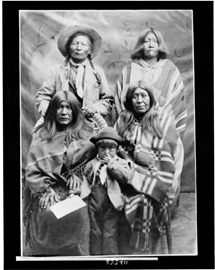
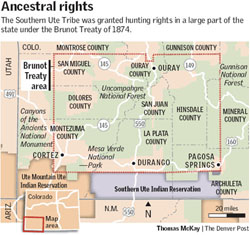
Connect With Us





